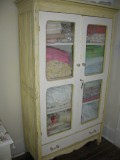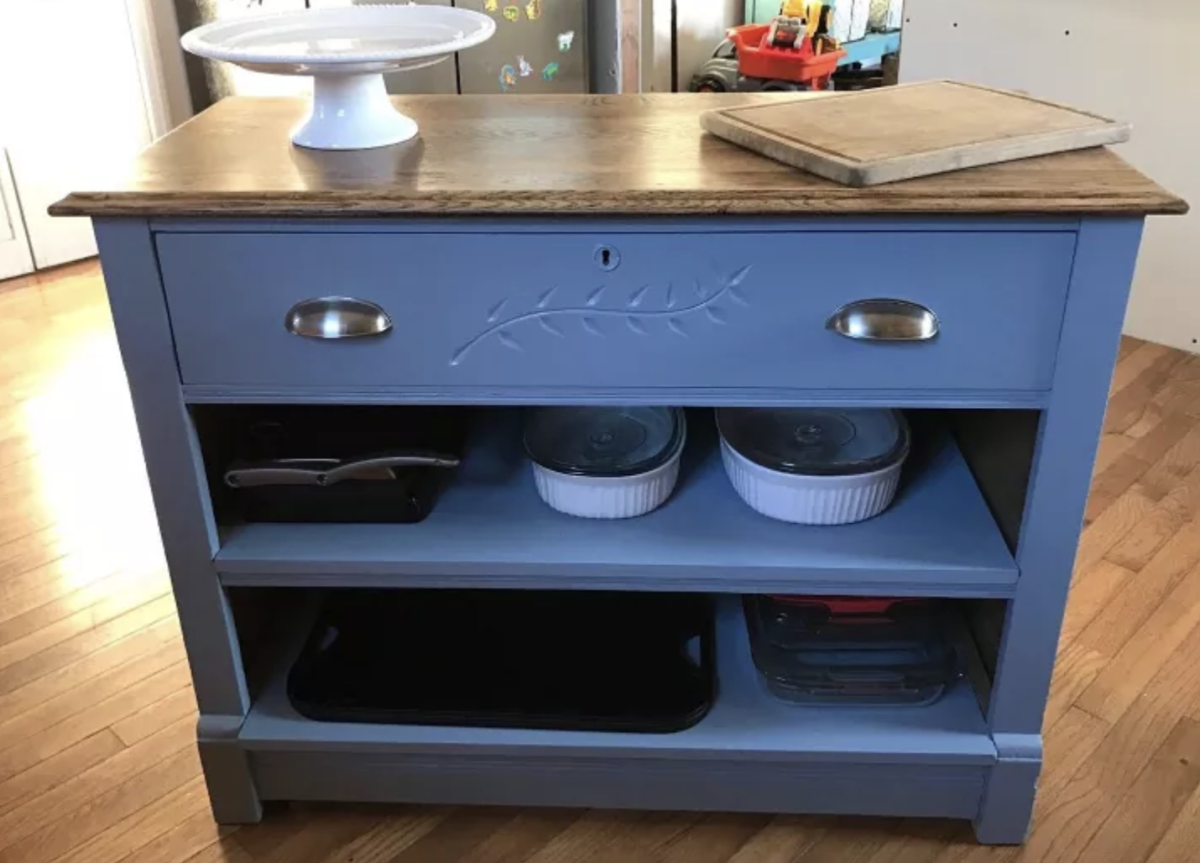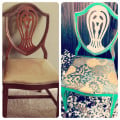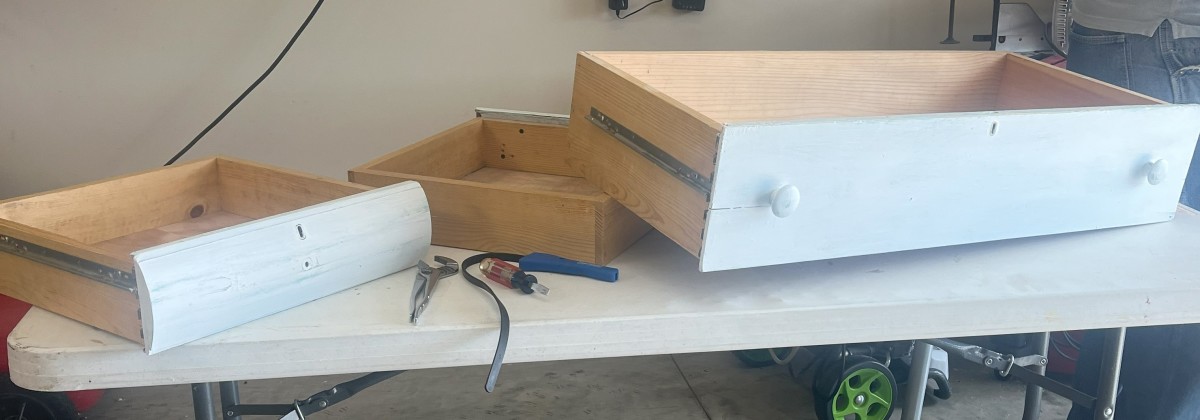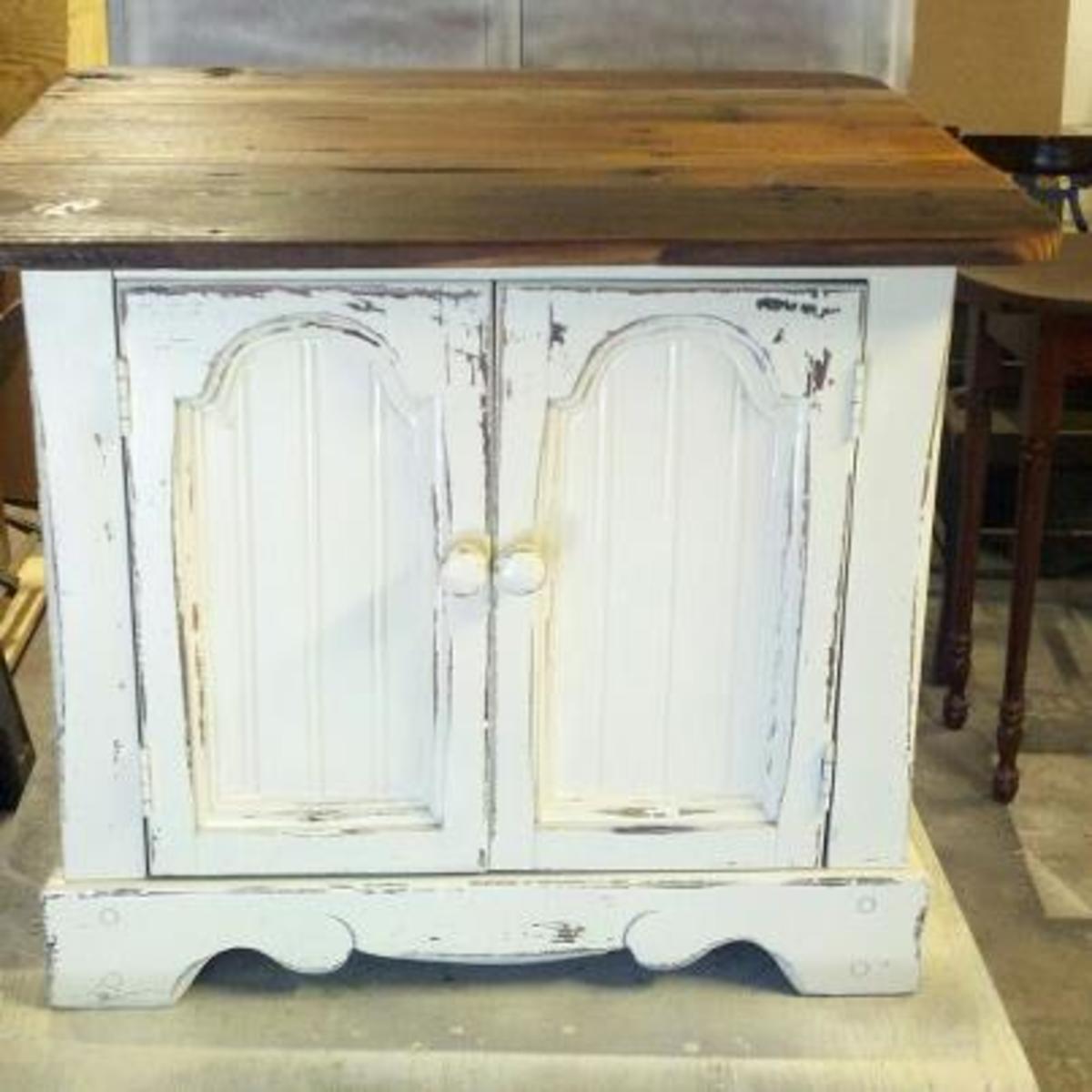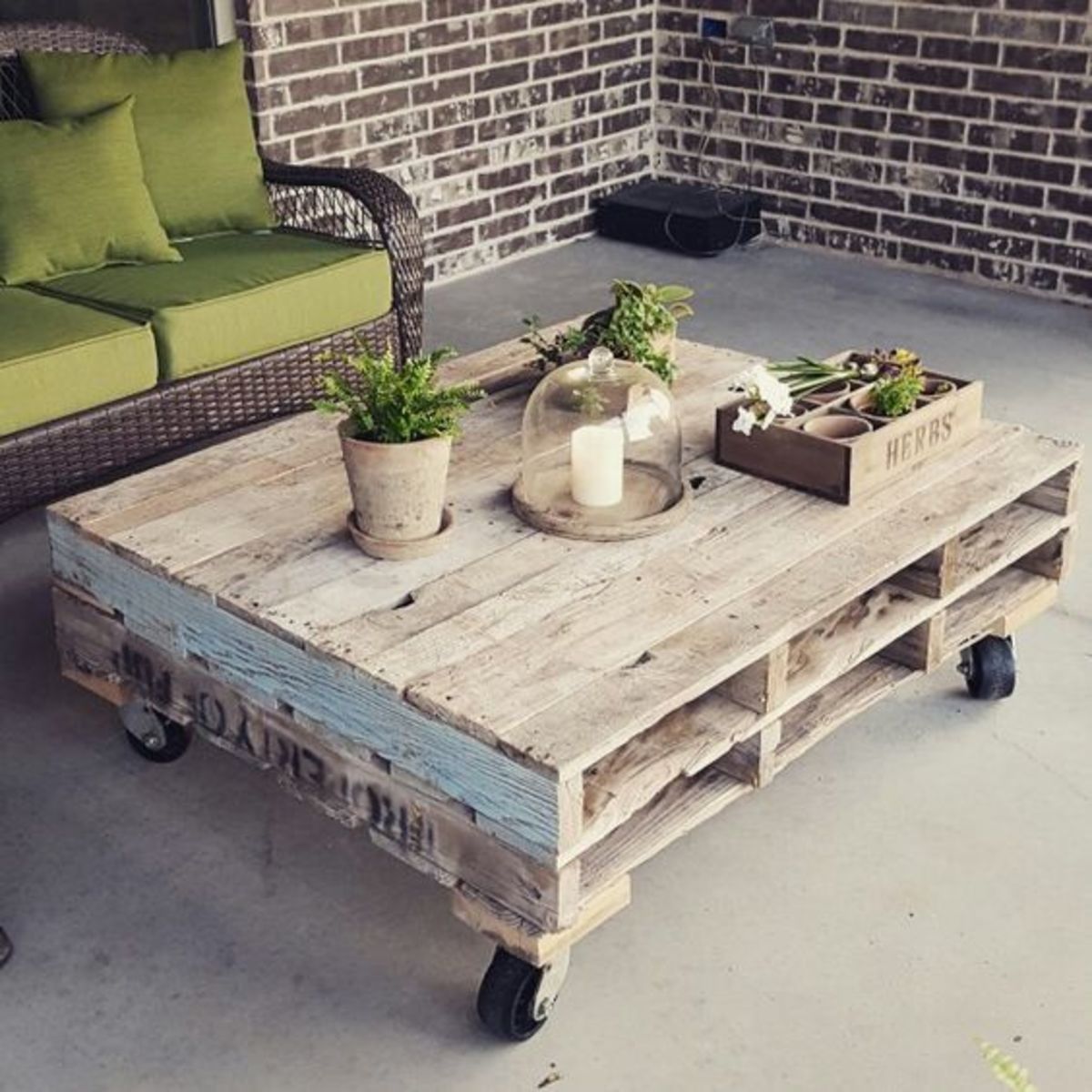Separating Natural from Artificial Wear on Antique Furniture
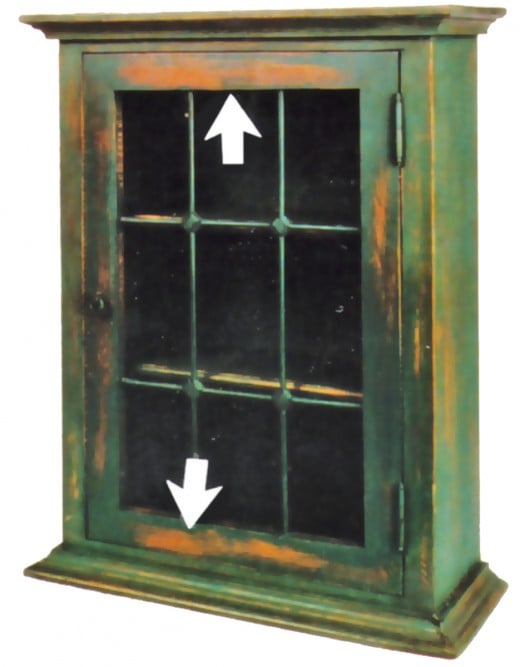
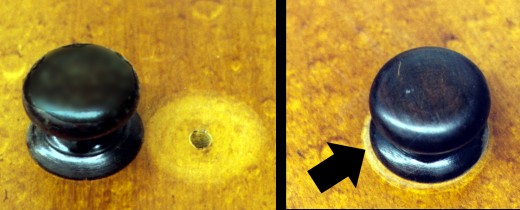
When examining furniture, the absence of normal wear or the presence of artificial wear is among the most important clues to authenticating age. Authentic wear is always logical and consistent with the original function of the piece. In other words, does the paint wear match how the piece was supposedly used? Put your hand on a drawer pull, open a cupboard door, sit in a chair. Do moving parts match the pattern of paint wear? Does wear occur where hands and feet naturally make contact?
Look at the glass door cupboard in Fig. 1. Note that the paint is completely “worn” from the middle of the door (white arrows). What caused the paint to wear in these areas? Hands wouldn’t touch these areas as the door opened and closed. There are no moving parts to swing or rub against these surfaces. This is a typical example of illogical wear that can’t be explained by normal everyday use. Any wear that can’t be explained is a warning sign of a reproduction which has been artificially aged. It is also possibly a genuinely old but damaged piece that has been repaired and the artificial wear is hiding evidence of the repair. In both cases, the artificial wear is clear evidence that the piece is either new or at the very least substantially altered.
But don’t just focus on the areas in which the paint is completely worn away. You also need to examinethe entire painted surface. Logically, any gouges and dents in the original painted surface, for example, cut through the paint and expose the bare wood below. If there is paint down in a dent or gouge, that means the paint has been applied after the gouges and dents were made. This could mean a genuinely old piece has been repainted but is also a warning a new piece has been intentionally “distressed” before new paint was applied.
Be particularly suspicious of any wear on furniture that appears in a regular, repeated, uniform pattern. Modern power tools such as belt sanders, wire brushes mounted on grinders, circular saws and others leave a series of fine parallel valleys and ridges. Parallel grooves, concentric circles and most other uniform, regularly repeating patterns in consistent width, depth and direction are almost always the result of artificial wear. Natural wear, produced one scratch or dent at a time, occurs over many years and should generally appear in random widths, directions and depths. In many cases, evidence of tool –produced wear will often be painted over so examine all surfaces carefully.
Genuinely old piece are frequently repainted to increase the selling price. You can generally catch most of these alterations with a simple checklist of questions. Does the entire surface feel the same to the touch? If the painted surface is all original, the finish should feel the same all over. That is to say the paint in the middle of the side of a chest of drawers should feel very similar to the paint in the middle of a drawer front. If one area or one color feels different, investigate further. If the paint is crazed, the crazing should be consistent over the entire piece. Mismatched crazing is a warning sign that different materials have been used. Maybe the wood has been replaced or chemistry of the new paint doesn’t match the original vintage paint. Does the surface look the same under ultraviolet or black light? New materials will rarely fluoresce the same as old materials. Any differences would indicate a disturbance in the original surface.
Another important clue to age is the presence of appropriate “shadows.” When discussing antique furniture, “shadow” refers to differences in finish and color produced by natural aging. Shadow in this sense does not mean dark or black. It refers to a relative difference between surfaces exposed to wear and surfaces protected from wear. In many cases, a furniture shadow is lighter not darker than a surrounding surface, but it is still referred to as a shadow.
The part of a drawer covered by a handle or pull, for example, is not exposed to the wood smoke, grime and abrasion as exposed parts of the drawer. If the original hardware has been on the furniture for 100 years and the piece has not been refinished, the protected surface under the hardware should logically look different than surrounding unprotected surfaces. The outside bottom of the lowest drawer in a chest of drawers, for example, should be darker than the bottom of higher drawers in the same chest.
Hardware can also show wear shadows. The shaft or bolts of a handle, for example, hidden under wood will appear different than the parts of the handle exposed to daily wear. Likewise, parts of hardware which are constantly touched or moved, like a knob or pull, will have a different pattern of wear than parts that merely support the knob or pull but are not touched in normal daily use.
Drawers are one of the best places to check for shadows because they include both hardware and movement of wooden parts. Whether inspecting an entire chest of drawers or a single drawer in a desk, drawers can often tip you off as to whether the entire piece is right or wrong. The bottom edges of drawers and the sides of drawers, for example, should have matching shadows where these points slide against the chest frame. These typical wear patterns of vintage pieces are missing from the reproductions. See Fig 2
The exact time it takes to produce a shadow depends on the original finish, how the piece has been used or stored and the conditions to which a piece is exposed such as coal or wood smoke, cooking fumes, sunlight, humidity and other variables.
Mark Chervenka for Ruby Lane

